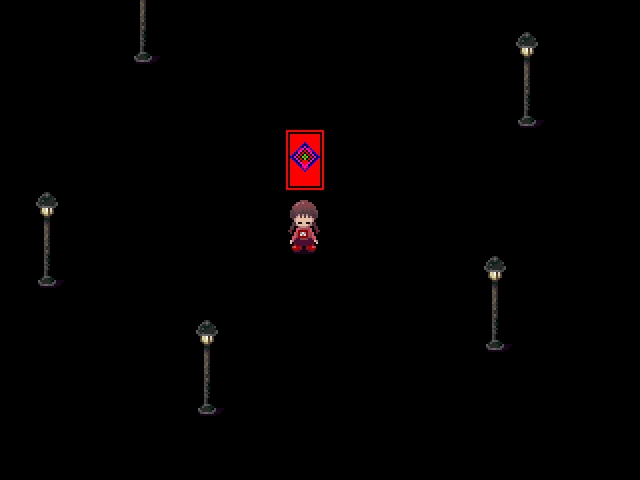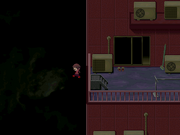
The Lamp World(電燈の世界)
The Lamp World(Kenji Miyazawa)[]
※Similarities work 宮沢賢治(Kenji Miyazawa) ?
http://yumenikki.wikia.com/wiki/Mars(name)#Final_Destination.28Night_on_the_Galactic_Railroad.29
1 詩「春と修羅」 (1 Poem"Spring and Shura")
詩集では制作日として「1922.4.8」という注記がある(賢治の場合、発表までの間に何度も書き直しを行う場合がほとんどであるため、第一稿を着想ないしは執筆した日付と考えられている)。また、タイトルに"mental sketch modified"という副題が付されている。なお、本詩集中の「青い槍の葉」「原体剣舞連」にも同じ副題が付いている。
※Easter therefore varies between 22 March and 25 April.

宮沢賢治『春と修羅 - 心象スケッチ』"Spring and Ashura - mental sketch modified"(1924.4.20)
http://yumenikki.wikia.com/wiki/Effects(name)#Effects.28Easter_egg.29
2 詩集『春と修羅』(第一集) (2 Anthology Spring and Shura)
上記作品を含めた69編の作品と、「序」(これを作品と見なすと70編)からなる詩集。1922~23年に制作された作品が収録されている。 1924年4月20日、東京の関根書店から刊行。ただし事実上は賢治の自費出版である(実際の印刷は賢治の住んでいた花巻の印刷所で行われた)。正確なタイトルは『心象スケッチ 春と修羅』で、賢治自身は「詩集」と呼ばれることを好まなかった。 http://why.kenji.ne.jp/haruto/sinla4.html

【電燈】でんとう(Lamp Effects)
わたくしといふ現象は
假定された有機交流電燈の
ひとつの青い照明(Blue-Light)です
(あらゆる透明な幽霊の複合体)
風景やみんなといっしょに
せはしくせはしく明滅しながら
いかにもたしかにともりつづける
因果交流電燈の
ひとつの青い照明です
(ひかりはたもち、その電燈は失はれ)

Blue light(Neon Egg)
http://why.kenji.ne.jp/haruto/100jo.html
宮沢賢治の「Spring and Ashura」(English.ver)
http://detail.chiebukuro.yahoo.co.jp/qa/question_detail/q1019623720
The Lamp World(hetu-phala)[]
※Japanese Theory of 「春と修羅(Spring and Ashura)」
http://homepage2.nifty.com/nisen-nibyo/kenji/kenji_02.html
因果交流電燈の
ひとつの青い照明です
(ひかりはたもち、その電燈は失はれ)

Saṃsāra for a Resurrection?
因果とは原因と結果のことですが、仏教の世界では前世の行いの善し悪しによって、現在生きている世界での運命が決まるという考え方があります。すると「ひかりはたもち、その電燈は失はれ」ということは、電燈が人間の肉体を、ひかりがそのたましいを意味することになります。肉体が滅びてもそのたましいは生まれ変わるという思想は、たぶんに仏教的ではあります。
I understand that the causal cause and effect, there is a good or bad idea by the deeds of previous life, the fate of the world is determined that the current living in the world of Buddhism. Then that "light is kept, it is Ushinau flashlight" that is, electric light will mean that the light is Spirit, the human body. Its thought that reborn spirit, even if body perish, perhaps it is a Buddhist.
因果応報とは、「善い行いが幸福をもたらし、悪い行いが不幸をもたらす」とする考え方、信仰である。
Idea that "good deeds will bring happiness, bad behavior brings misery," the chickens come home to roost and is a faith.
「善い行いが幸福をもたらし、悪い行いが不幸をもたらす」といった考え方自体は、仏教に限ったものではなく、世界に広く見られる。ただし、仏教では、過去生や来世(未来生)で起きたこと、起きることも視野に入れつつこのような表現を用いているところに特徴がある。
Is not limited to Buddhism, the concept itself "good deeds will bring happiness, bad behavior is unhappy," such as is found widely in the world. However, in Buddhism, is characterized in that such expressions are used while considering what happened in the (raw future) past life and the afterlife, or you can get up.
もともとインドにおいては、バラモン教などさまざまな考え方において広く、業と輪廻という考え方をしていた。つまり、過去生での行為によって現世の境遇が決まり、現世での行為によって来世の境遇が決まり、それが永遠に繰り返されている、という世界観、生命観である。
Widely in various concepts such as Brahmanism in India, I had the idea of reincarnation and business originally. In other words, the circumstances of this world view of the world is determined by the action of past lives, afterlife is determined by the circumstances of the act in the real world, and that it has been repeated forever, is a view of life.
